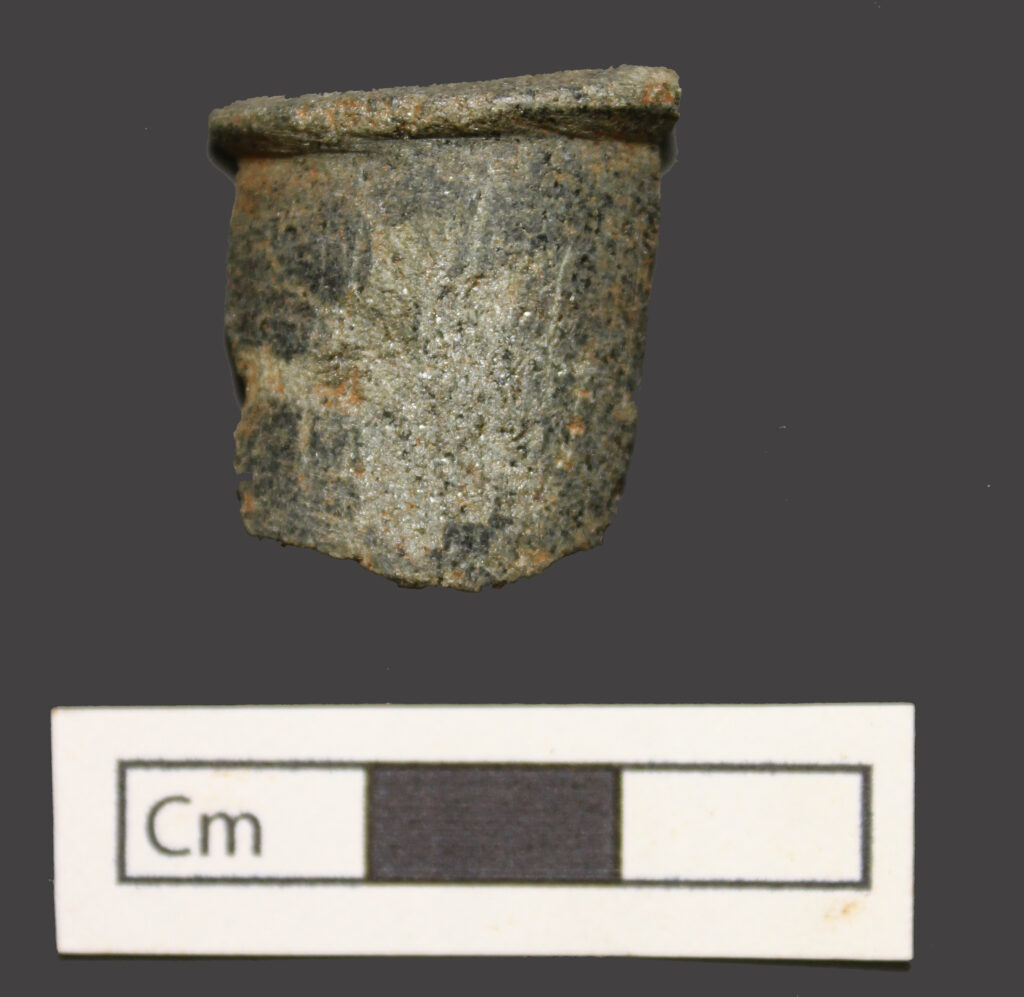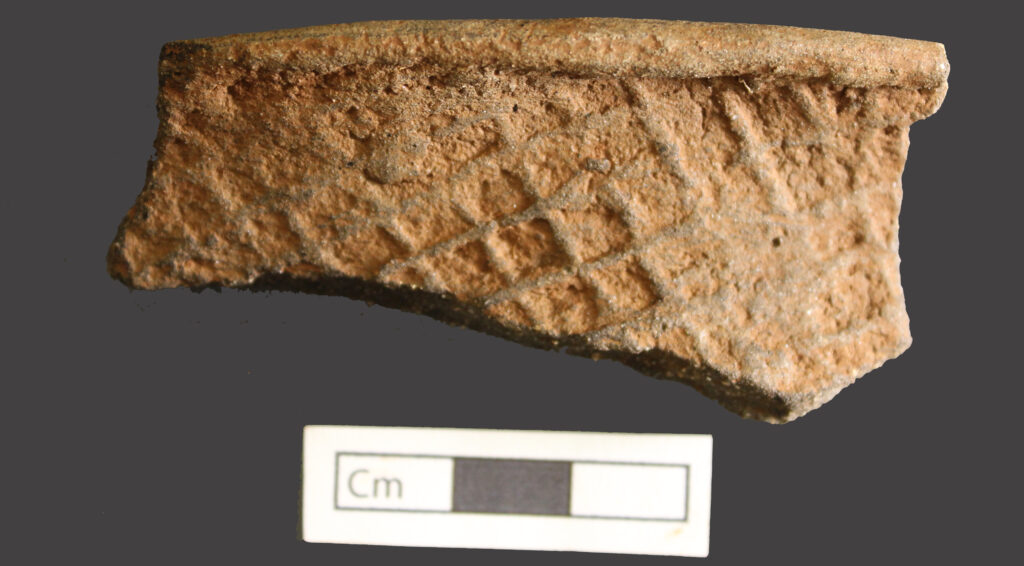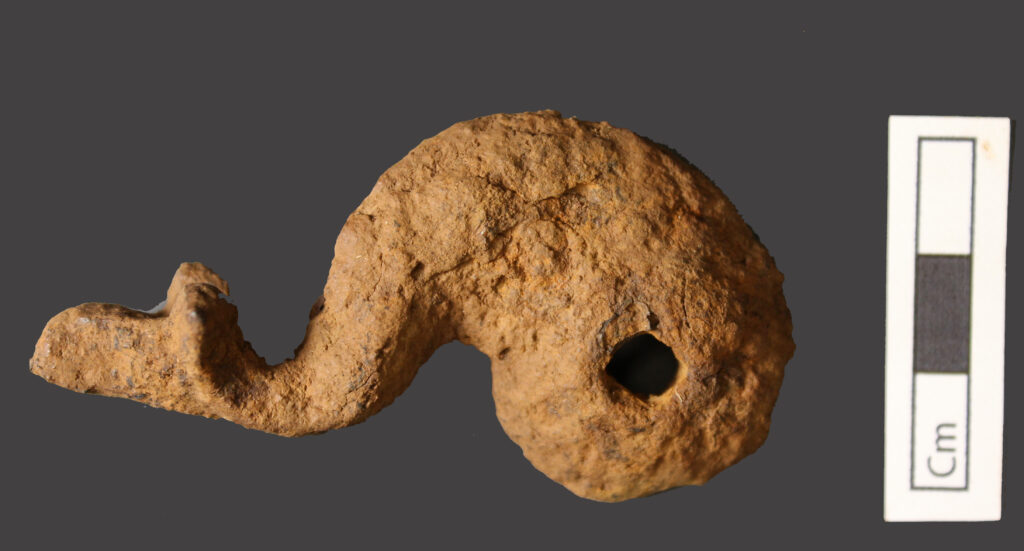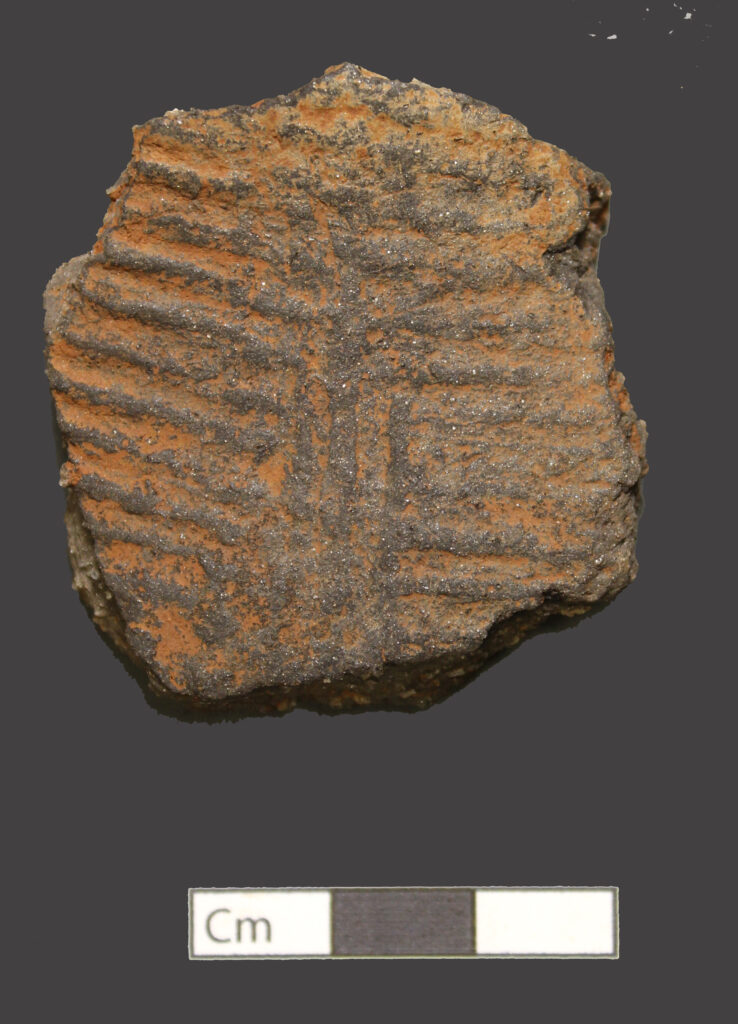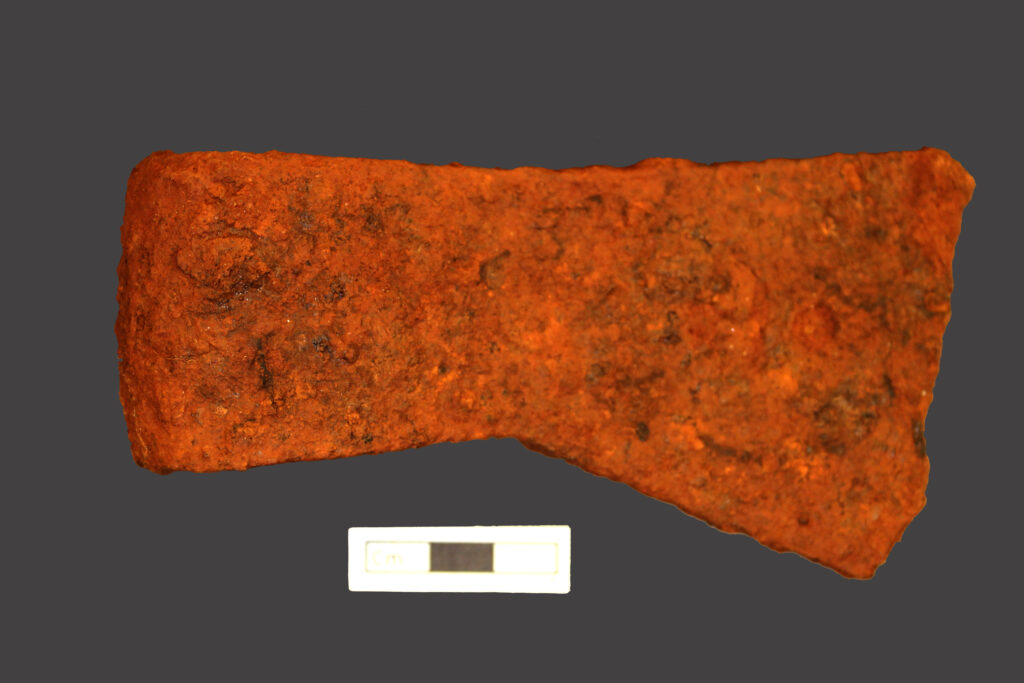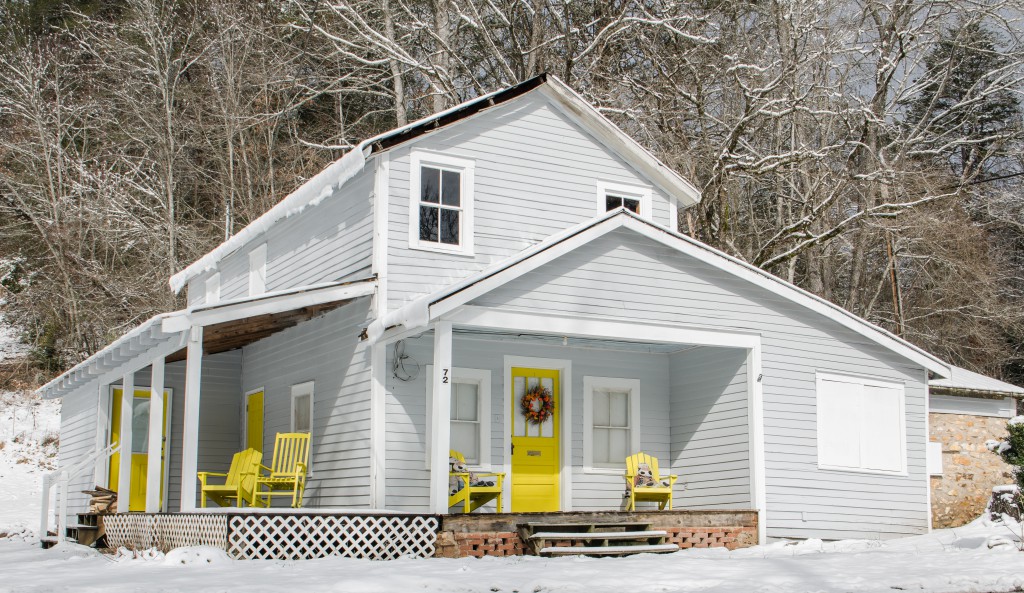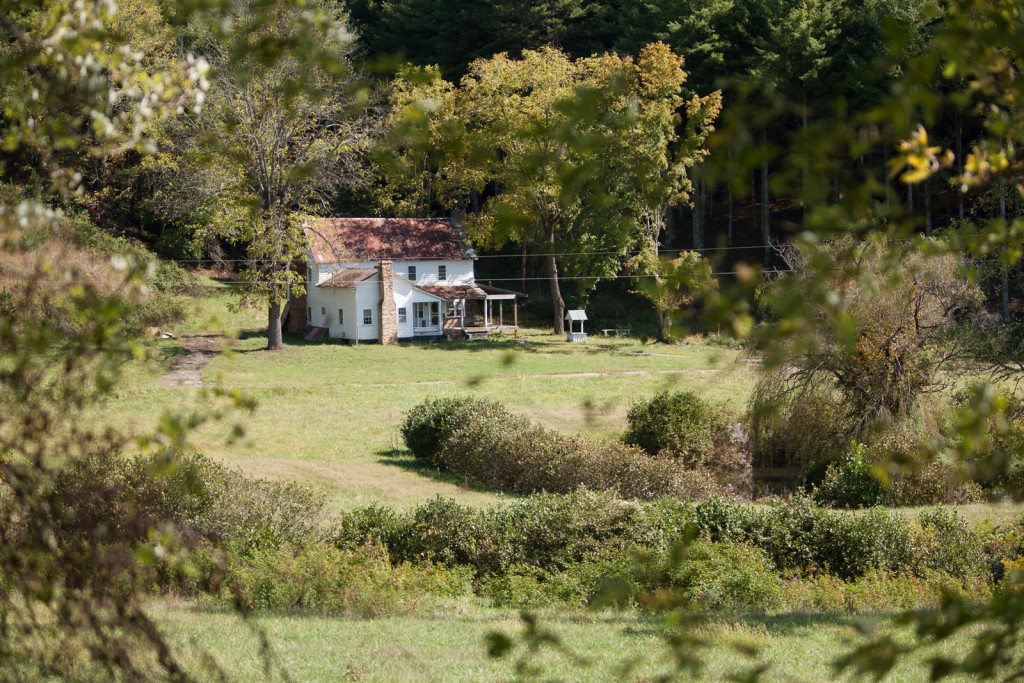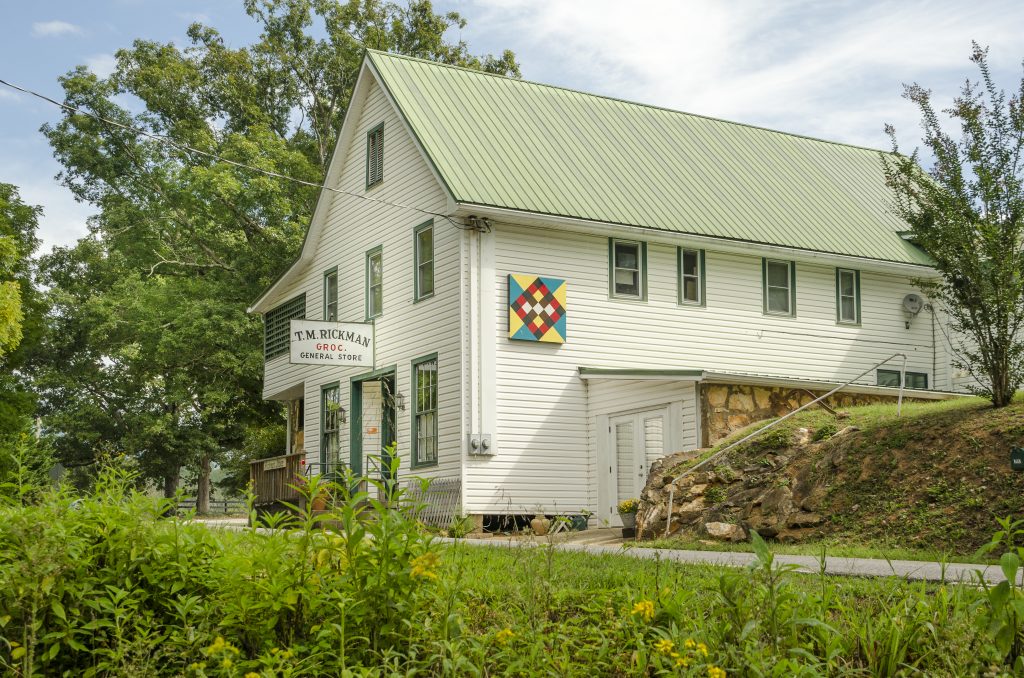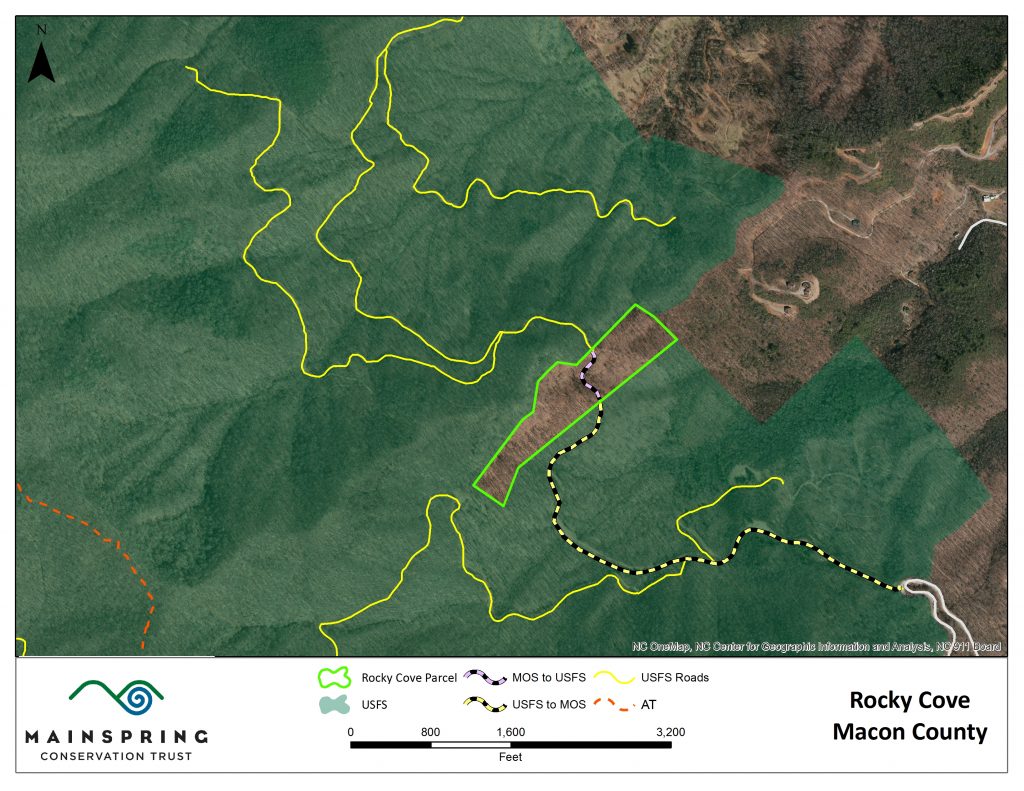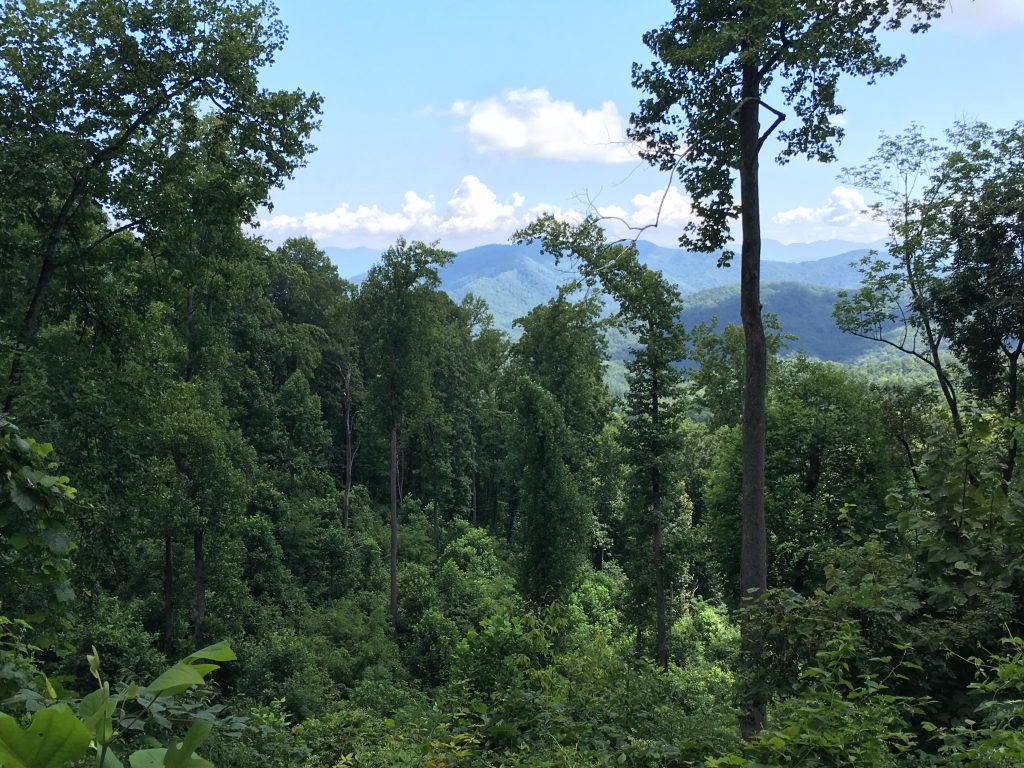This past summer, 16 students from Western Carolina University, led by Dr. Brett Riggs, Dr. Jane Eastman and field assistant Karen Biggert, drove each weekday from Cullowhee to Franklin to spend their days outside for more than four hot, sticky weeks. Their mission? Apply scientific techniques to discover archaeological evidence on Mainspring’s Watauga Mound property, and learn more about what northern Macon County looked like hundreds of years ago.
Partnering with the Tribal Historic Preservation Office at the Eastern Band of Cherokee Indians and using remote sensing technology and imaging software, the upper-level Archeological Field Study students scanned the ground at half-meter intervals throughout the 70-acre field to discover, by direct observation and measurement, how the Cherokee people lived and thrived in this region.
“We knew from 18th century documents that Watauga was a very important town, but there was some question about whether the small hillocks in the field represented the mound that Bartam saw there in 1776,” archeologist Brett Riggs explains. Riggs serves as the Sequoyah Distinguished Professor of Cherokee Studies at Western Carolina University. “With new technology, we can learn a whole lot about village structure and site plan without digging, including where the mound actually is. Without that that geophysical equipment, it would have taken years of excavation to find out what we’ve found in four and a half weeks.”
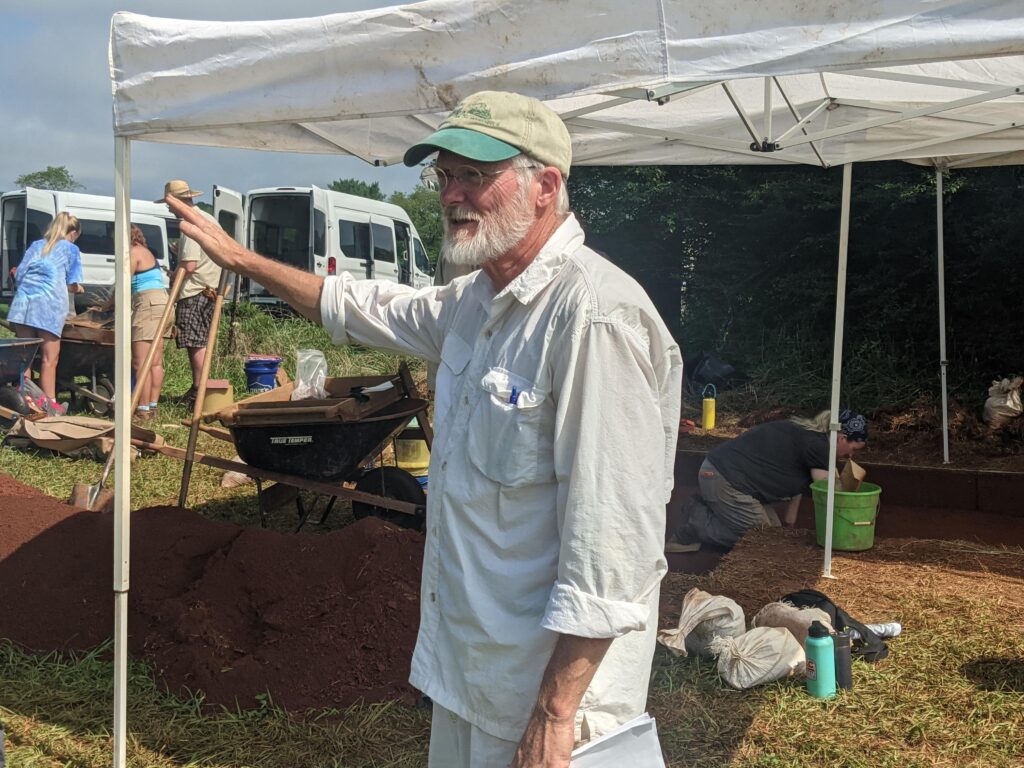
Because soil contains iron, activities like burning a fire or digging a hole can realign the local magnetic fields in the ground, producing magnetic anomalies that contrast with those of the surrounding unmodified soils. Archeologists use a geophysical technique called gradiometery to map subsoil magnetism and detect those local anomalies. Although gradiometers only “see” about a meter deep, most magnetic anomalies that represent human activities are within that uppermost layer, allowing researchers to get a big-picture understanding of the site they are studying.
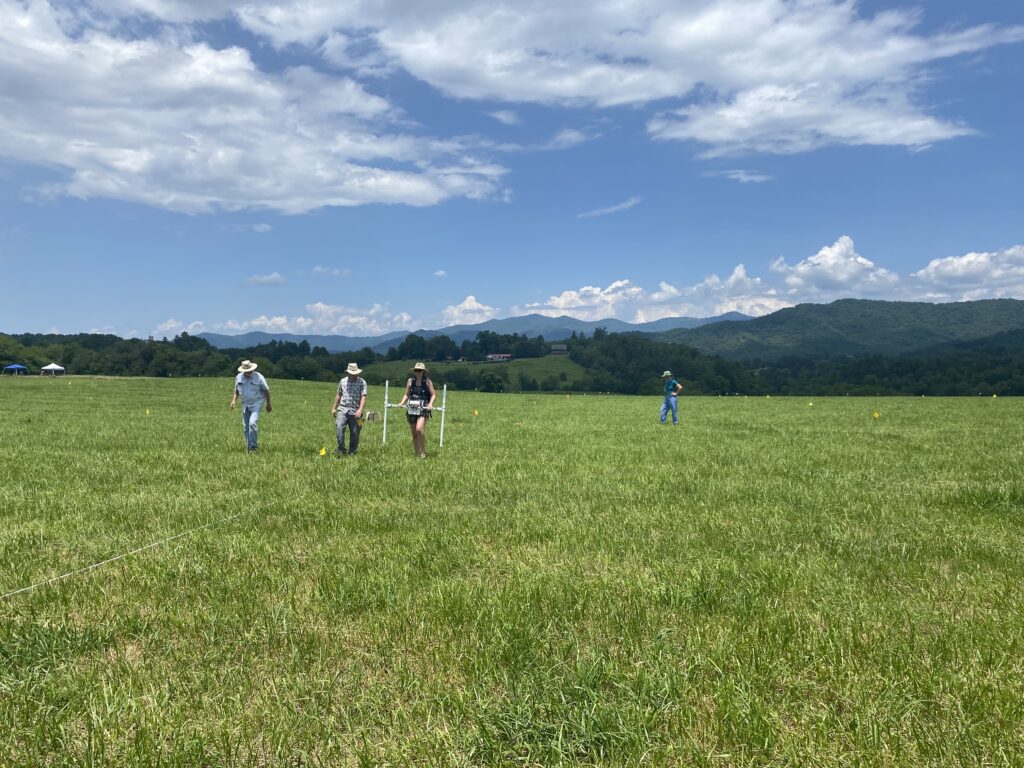
“We found projectile points where there was human occupation 7,000 years ago, with continuous occupation starting as early as 1,000 years ago,” Riggs explains. “We can also see when the community starts to spread out, especially accelerating after the Revolutionary War.”
Using the gradiometer, students found domestic houses — octagons 23 feet across with four long sides and four short sides — and pits dug into the ground to store food, particularly sweet potatoes, a popular crop in the 18th century. Those pits are especially important for archeologists. “Once any of the potatoes rotted, the pits couldn’t be used for food storage again, so they were used for trash,” Riggs continues. “We love those pits because there we can find all kinds of evidence that tells the stories of the people who lived here. Archeologists are just dumpster divers at heart.”
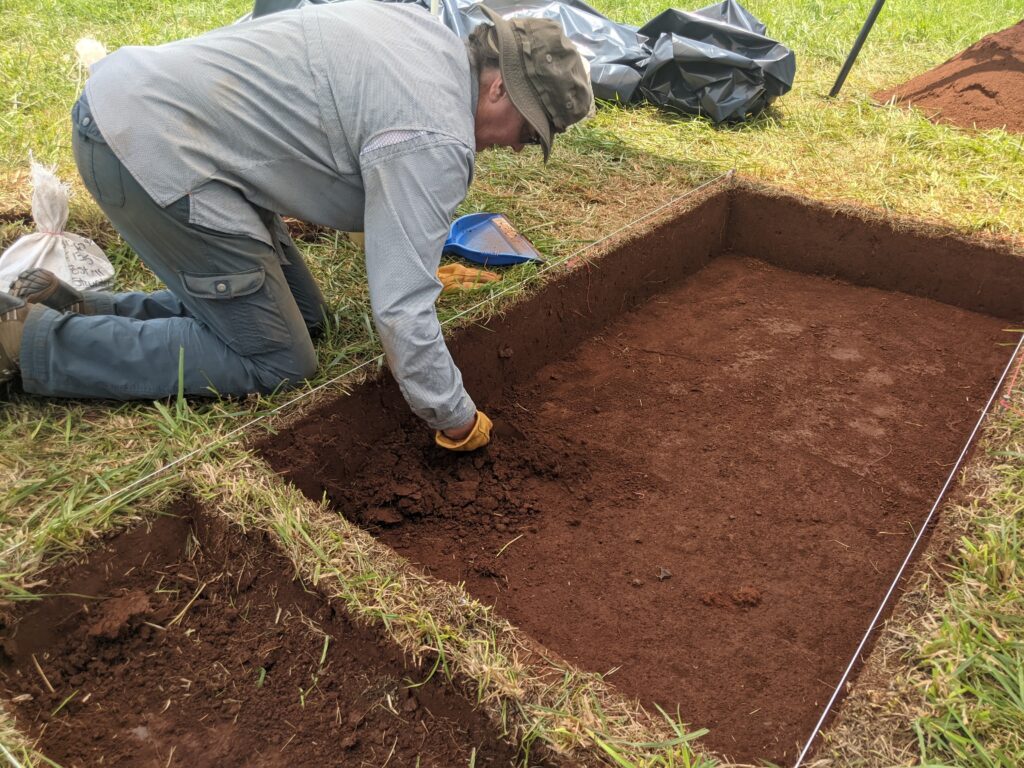
But the biggest discovery came from testing not one, but two small hills — bumps really — that are subtle landforms located in the pasture. Although both had been plowed significantly over time, the two hills had piqued the curiosity of several researchers over the years.
“We studied one hillock first, because the farmer was cutting hay on the field with the other hill,” Riggs explains. “There, the gradiometry revealed remains of at least three superimposed council houses — clearly evidence of Watauga Mound.”
Those council houses were about 48 feet wide and 24 feet tall and lasted about 20-50 years. The entrance to a council house faced south-southeast to perfectly align with the sunrise of the winter solstice. Once a council house needed to be rebuilt, the previous one would be burned and the new structure built on top. Riggs estimates about five to eight such houses were on Watauga Mound through time. “The council house was used for astronomical observations,” Riggs says. “This area would be perfect for that use because of the open fields on an elevated plateau — the Watauga Plains. The sun comes up and shines straight through the door.”
Once the farmer finished cutting hay, the WCU team explored the second rise in the pasture, and what they found astounded the experts. “We scanned the second mound and found another council house and pavilion, facing away from Watauga Town,” Riggs explains. “No one has documented paired mounds, with paired council house structures in the southern Blue Ridge before.”
This mound is offset from the larger one, but closer to water. Riggs said the house on it could have been used for anything communal. “It could have been a church, courthouse, dance house, or even a lodge reserved for groups of men, patterns observed in other areas of the Southeast,” he explains. “In any case, this is unprecedented in this area.”
The council houses and surrounding town likely stood until 1776, when Griffith Rutherford, brigadier general of the Salisbury District militia, led 1,700 troops in an expedition against the Cherokee. After stoking significant fear in white North Carolinians over a potential Cherokee alliance with the British during the Revolutionary War, Rutherford and his troops marched through the Cherokee Middle Towns — including Cowee, Watauga and Nikwasi — and burned crops, houses and livestock, eventually destroying 36 villages and leaving the Cherokee people to survive through winter on wild game and nuts, with no protection from the elements. Though the Cherokee eventually rebuilt, they spread their villages over a significantly larger area, hoping to avoid another total loss of resources if attacked again. (learn more about the Rutherford Expedition here)
Riggs says he is excited to bring other classes back to the historic town for additional research. “So often, when archeologists are brought in for projects, it’s because some type of development is being planned for the site, so we’re on a tight timeframe to complete our work,” he says. “Having a place — especially one as special as Watauga — that is conserved forever means we can spend the next 30 years being diligent about the study and not be rushed to finish. It is such a gift for us, so I’m so thankful that the landowners were willing to sell to Mainspring and this important cultural site will be protected forever.”
